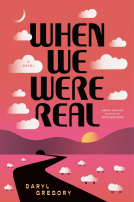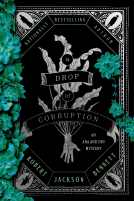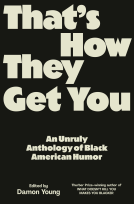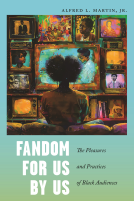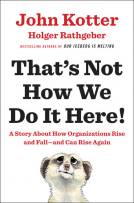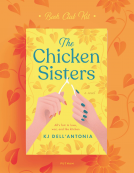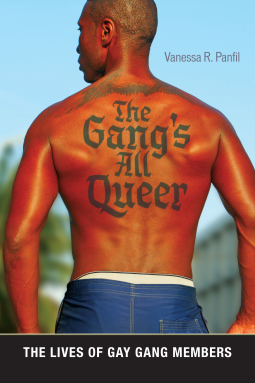
The Gang's All Queer
The Lives of Gay Gang Members
by Vanessa R. Panfil
This title was previously available on NetGalley and is now archived.
Send NetGalley books directly to your Kindle or Kindle app
1
To read on a Kindle or Kindle app, please add kindle@netgalley.com as an approved email address to receive files in your Amazon account. Click here for step-by-step instructions.
2
Also find your Kindle email address within your Amazon account, and enter it here.
Pub Date Aug 15 2017 | Archive Date Jul 14 2017
Description
Honorable Mention, 2018 Distinguished Book Award presented by the American Sociological Association’s Sociology of Sexualities Section
The first inside look at gay gang members
Many people believe that gangs are made up of violent thugs who are in and out of jail, and who are hyper-masculine and heterosexual. In The Gang’s All Queer, Vanessa Panfil introduces us to a different world. Meet gay gang members – sometimes referred to in popular culture as “homo thugs” – whose gay identity complicates criminology’s portrayal and representation of gangs, gang members, and gang life. In vivid detail, Panfil provides an in-depth understanding of how gay gang members construct and negotiate both masculine and gay identities through crime and gang membership.
The Gang’s All Queer draws from interviews with over 50 gay gang- and crime-involved young men in Columbus, Ohio, the majority of whom are men of color in their late teens and early twenties, as well as on-the-ground ethnographic fieldwork with men who are in gay, hybrid, and straight gangs. Panfil provides an eye-opening portrait of how even members of straight gangs are connected to a same-sex oriented underground world.
Most of these young men still present a traditionally masculine persona and voice deeply-held affection for their fellow gang members. They also fight with their enemies, many of whom are in rival gay gangs. Most come from impoverished, ‘rough’ neighborhoods, and seek to defy negative stereotypes of gay and Black men as deadbeats, though sometimes through illegal activity. Some are still closeted to their fellow gang members and families, yet others fight to defend members of the gay community, even those who they deem to be “fags,” despite distaste for these flamboyant members of the community. And some perform in drag shows or sell sex to survive.
The Gang’s All Queer poignantly illustrates how these men both respond to and resist societal marginalization. Timely, powerful, and engaging, this book will challenge us to think differently about gangs, gay men, and urban life.
Available Editions
| EDITION | Other Format |
| ISBN | 9781479870028 |
| PRICE | $36.00 (USD) |
| PAGES | 312 |
Featured Reviews
 Rebecca T, Educator
Rebecca T, Educator
Vanessa R. Panfil, <em>The Gang’s All Queer</em>: Study of gay/bisexual male gang members in both gay and mixed male gangs. Most of the people she interviewed were nonwhite. Some identified as bisexual, “but sometimes downplayed their attraction to women so that their families would take their disclosures seriously.”
Many of them who are in mixed gangs were out, at least to some people; the ones in gay gangs were all out. She argues that they navigate honor-based masculinity norms by doing additional “identity work” that heterosexual gang members don’t necessarily have to do, spending a lot of time and energy on how they were perceived (though they also noted that this was a normal thing for anyone who lived in a high-violence environment to have to do). Her informants often explicitly defined themselves as not “faggots,” who they identified as gay men who are performatively, outrageously gay (even though she notes that a number of her respondents did take on aspects of this identity, which they identified as including tight jeans and painted nails—e.g., “I mean, I dye my hair, but I dye my hair and it still look masculine. Or, I paint my nails, but I paint it a clear coat”). [She also makes clear that her informants would commonly, when they first used that term, “stop talking and laugh, or apologize, or try to explain it away,” but they used it so often that she became desensitized. At the same time, they found it highly offensive when used against them by outsiders.]
Panfil says that, even without her prompting, they repeatedly wanted to discuss “real men” and other aspects of “realness,” including men who were gay but unwilling to acknowledge it and “real gangs” (many participants preferred to use “posse” or “clique” for their group, even a group that would engage in violence together). They overwhelmingly preferred male partners who were conventionally masculine, though they were critical of those who refused to acknowledge their own sexuality, who also caused real practical problems (e.g., jealous girlfriends, family and friends who couldn’t be introduced, etc.). “Trades”—men who identified as straight but had sex with men—were nonetheless at the same time “eroticized by most participants for their rugged masculinity and their ‘hoodness.’”
Men who identified as members of straight gangs often made clear that they just didn’t know whether/how many other gay men there were in the gangs; many of them had had sex with other closeted gang members. Her informants weren’t particularly critical of closeted gang members—but they condemned closeted men who performed homophobia to cover up their own desires and acts.
A number of gang members also used their willingness to inflict violence to perform masculinity, though gay gangs were more likely than mixed gangs to be less violent/confine illegal activity mostly to fraud and drug sales. They could be provoked to violence either to demand respect generally, including from other gay gangs, or, sometimes, in response to specifically homophobic treatment. Over two-thirds of the men she studied had been in a physical fight due to anti-gay harassment. Fights could also break out just over respect, though as always most of the time the aggression stayed limited to posturing: most disputes die and no one shoots.
Straight gangs were more socially segregated than gay gangs, whose members often mingled with non-members or even members of other gay gants. A number of members of the gay gangs came in through sexual/romantic relationships with other members (but no one had to have sex with everyone already in the gang to join, sorry fandom); gay gangs tended to form later in men’s lives (average joining age 18) than mixed gangs (average joining age 14), which were more likely to be neighborhood-based. Gay gangs also had fewer initiation rituals, which Panfil speculates was related to their already-shared experiences: “they had grown up together and come out together. If members of these tightknit groups deemed a new person to be worthy of their time, this constituted sufficient acceptance.”
Nearly sixty percent of her informants had sold sex (roughly the same percentage that had sold drugs), and others came close in terms of dating in exchange for money or gifts, but this wasn’t a part of their gang membership as such, though they did learn “tricks of the trade” from older gang members. They preferred to sell sex via the internet as safer, more lucrative, and more respectable than street prostitution. Panfil indicates that many of her informants behaved in gender-fluid ways in their daily lives, especially intimate lives, but their public gender presentation was more masculine—which they saw as protective as well as appropriate, given their at least partial acceptance of existing prejudices. The saddest quote for me: “before I knew what it was, I knew how to hide it.” Gay gangs allowed members to be “relatively unconcerned about impression management related to their sexual identities,” and their members were therefore more willing to talk about their emotional connections to fellow gang members.
Panfil also points out that gay members of straight gangs generally behaved in ways consistent with other accounts of (presumptively straight) gang members, with the exception of homophobic gay-bashing that has been reported among closeted gang members elsewhere. Most of the members’ time is spent hanging out, but gang members are still more likely to be involved in crime and violence than non-gang members. Violence was a central part of gang identity, and 8 of 12 men she studied who’d carried a gun or used one in a crime were in straight gangs. Of the 19 who were or had been in straight gangs, 15 didn’t come out to the gangs, mostly not out of fear of violence but more out of fear of shunning, though there’s one striking story of a young man who had to fight his way out of his gang in prison when his gay relationship was discovered. Panfil notes that gangs often serve the roles of family—and, given biological families’ often negative reactions to coming out, it was reasonable to be concerned about other gang members’ reactions.
Panfil also discusses hybrid gangs—usually friend-based groups where a substantial minority were openly (within the group) gay; such gangs were still crime-involved, but they didn’t sell drugs together (as many straight gangs did) or sell sex together (as members of gay gangs occasionally did). Hybrid gangs often had women, sometimes women who identified as lesbian or bisexual; from her informants’ perspective, the women didn’t face many barriers to doing so, at least within the gang.
About half of her informants had work in the legal economy, but about half also had criminal records that made such work difficult to get or keep. Because they associate masculinity with being able to provide for oneself and one’s family, this created a situation in which selling drugs or other criminal activity could seem like the responsible thing to do. Meanwhile, selling sex was lucrative—$200 or $250 for an hour of work, an order of magnitude more than they could earn in the formal economy, and on a better schedule, though it was still perceived as distasteful. I was struck by the fact that “[t]he threat and impact of a criminal record was so overwhelming that [] participants refused to call the cops on romantic partners, even those who had done them serious harm.”
Here’s a provocative bit from the conclusion: “In a different generation, or perhaps among people from different facial/ethnic or class backgrounds, a group whose members fight back against anti-gay harassment, use underground economies to meet their needs, and share a common meaning system might call themselves a radical political group, not a gang.” As this indicates, Panfil seems most interested in the hybrid and gay gangs, because of their greater openness, even as she emphasizes the different trajectories that bring young men into gangs and the real risks that openness may pose to them.
 Reviewer 132350
Reviewer 132350
4* Interesting how open and willing to talk these guys were. The opposite to what's portrayed on investigative programmes.
This tale was a refreshing read in regular English, rather than academia English, and wasn't bogged down in stuff that went over the head of this Average Jane reader. I say this because I've recently tried to read other non-fiction, that interesting as it was, was way above my level of persistence and comprehension.
In this, a white, lesbian student studies gangs in Ohio over a period of time, building a relationship of trust with them to the degree that they socialised and some are still in contact with her on social media (they reaches out; she doesn't, for fear of outing anyone).
It's interesting to see exactly how open the gang members she's encountered are, and how most of them are about finding a boyfriend, not just sex, swagger, dealing, turf wars or gesturing/posing. Some had family that accepted them after soul-searching, some had family that accepted them and even knew about their orientation, and yes, others were rejected by family. All of them accepted slurs to varying degrees, explaining that they used the same to describe themselves. Some of the words used, would be seen by most people as offensive, but they explained the use, and yes, it was in context.
There's a whole vocabulary that I learned, that I hadn't considered in context of gay men. There are too many words to list, but the issue of 'passing' came up - surprising to me, as I'd expected most to attempt to conceal their sexuality in order to be accepted, but in reality, few seemed bothered about it. Some gangs were straight, some gay, some hybrid and seemingly, there were no huge hostilities.
I'm not sure if the book is something that can be taken as gospel, as the study comprised circa 50 guys in a localised area, over time, with occasional treats being offered and money paid, so to some degree, a relationship of sorts built between the members and VRP. Had the study also been conducted in other parts of the country, simultaneously, and had there been more about the gang culture and life and what drew the guys into them and lead them to prison, it perhaps would have been more balanced and believable. I didn't get much of a sense of danger from the guys who were detailed, from those who were mentioned in passing, from the places they all went, from the socialising they did, so I'm not entirely convinced of the impartiality and accuracy of the study. These guys were no Ross Kemp Investigates gang members, but came across as...not-really-that-threatening types.
ARC courtesy of NYU Press and NetGalley, for my reading pleasure.
 Veridiana d, Reviewer
Veridiana d, Reviewer
4.8/5
First of all: not what I was expecting. I should have known that it would be more of an academical book, but I had hoped that it would be more story like than clinical. That was the only setback, honestly. Hence the 4.8 I'm giving it.
I began reading it and just couldn't stop. I read and read... and then, suddenly, it was over. And that is saying something, because normally I just can't stand academical texts. And that's the thing, it didn't really feel like one. Sure, it had stats, and basic research information, but it was first and foremost the tale of gay gang members.
It was funny at times the way the story was being told. Clinical? Yes. So how can it be funny? Well, Panfil was very nice in retelling, perhaps word for word, what some people say, and how naive they seem. Does it have some details that would cause someone to pause and think? Absolutely. Some things are really surprising, and they make you stop and just wonder what is going on, and why this isn't a topic being discussed.
This is a great book to read if you are interested in criminology, or simply crime, seeing as it gives you an insight in the gang member's lives, and kind of shifts into the outside point of view of them. It also mentions racism being mixed into the way people judge them, which isn't surprising, since race and sexuality are simply topics that are more scrutinized and "stepped on" than any others.
Readers who liked this book also liked:
Alfred L. Martin, Jr.
Arts & Photography, Multicultural Interest, Nonfiction (Adult)
John Kotter; Holger Rathgeber
Business, Leadership, Finance, Nonfiction (Adult)
